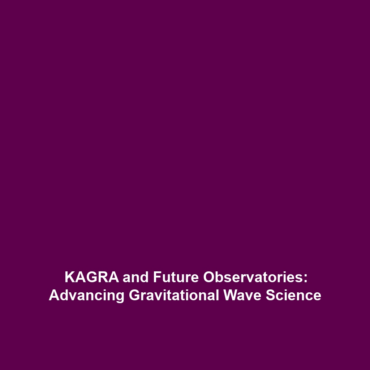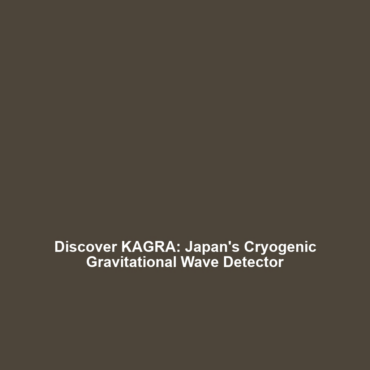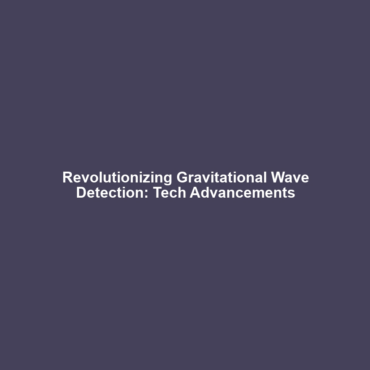KAGRA and Future Observatories: The Role of International Collaborations and New Detectors
Introduction
Gravitational waves, the ripples in spacetime caused by cataclysmic cosmic events, have transformed our understanding of the universe. KAGRA, a groundbreaking gravitational wave observatory located in Japan, represents a significant leap forward in this scientific frontier. It operates in concert with other observatories worldwide, such as LIGO and Virgo, through a collaborative network that enhances the detection capabilities of these instruments. As we explore KAGRA and future observatories, it becomes clear that international collaborations and innovative detector technologies play pivotal roles in the study of gravitational waves, facilitating unprecedented discoveries about the cosmos.
Key Concepts
The study of gravitational waves hinges on several fundamental concepts that KAGRA and future observatories aim to address. Below are key principles contributing to the advancements in this field:
- Interferometry: KAGRA employs laser interferometry to measure the slightest changes in distance caused by passing gravitational waves. This technique underpins the operational principles of all gravitational wave detectors.
- International Collaborations: KAGRA’s partnership with international observatories enables pooling expertise, sharing data, and enhancing detection sensitivity.
- Advanced Detectors: The development of next-generation detectors, such as KAGRA’s underground facility and enhanced sensitivity measures, is crucial for the future of gravitational wave science.
Applications and Real-World Uses
KAGRA and future observatories hold immense potential for practical applications, particularly in the realm of gravitational wave research. Some significant uses include:
- Astrophysical Research: The detection of gravitational waves provides critical insights into phenomena like black hole mergers and neutron star collisions, thereby advancing our understanding of fundamental physics.
- Cosmology: Gravitational waves can serve as a tool to probe the early universe, shedding light on cosmic inflation and the overall structure of the cosmos.
- Testing General Relativity: Observations made by KAGRA and partner observatories help validate Einstein’s theories and could reveal new physics.
Current Challenges
Despite remarkable progress, several challenges persist in the study and application of KAGRA and future observatories within the broader scope of gravitational waves:
- Detection Sensitivity: Increasing the sensitivity of gravitational wave detectors remains a technical challenge, necessitating ongoing innovations and upgrades.
- Noise Reduction: Cosmic and terrestrial noise can obscure signals, making it difficult to isolate gravitational waves from other disturbances.
- Data Analysis: The incalculable amount of data generated by observations requires advanced algorithms and substantial computational resources for accurate interpretation.
Future Research and Innovations
Future research endeavors in gravitational wave astronomy are set to usher in groundbreaking innovations:
- Next-Generation Detectors: Future observatories, including the proposed Einstein Telescope and Cosmic Explorer, promise to deepen our understanding with unprecedented sensitivity and detection capabilities.
- Global Collaborations: Strengthened collaborations among international observatories will facilitate more comprehensive data collection and interpretation.
- Machine Learning: The introduction of machine learning techniques may revolutionize data analysis, allowing for quicker and more accurate identification of gravitational wave events.
Conclusion
KAGRA and future observatories represent the forefront of gravitational wave research, fostering international collaboration and pushing the boundaries of detection technology. The journey ahead is filled with challenges and opportunities that promise to unravel the mysteries of the universe. For more insights into the advancements in gravitational wave astronomy, visit our related articles page and stay updated with the latest news.


